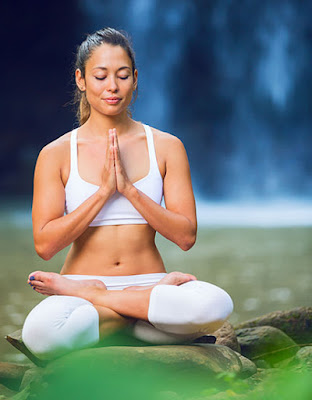Friday, 11 November 2016
5 Forms Of Yoga You Need To Know About
There’s no doubt that yoga has its roots in India but it had to get popular in the West before we sat up and took notice. Of course, we were all aware that yoga was a set of postures practiced for health and flexibility and yes, we knew the words Ashtanga, Hatha and Vinyasa but we’ll admit, we didn’t really know the difference between them. So we did some quick research to get our facts straight. Here’s the low-down on all the different forms of yoga.
Ashtanga Yoga:
Focussing on the eight basic principles, Ashtanga is an advanced yoga practice that builds endurance. Often considered a form of power yoga, students must synchronise their breathing with continuous postures that generate intense heat, exercise the muscles, detoxify organs and give the body a natural cleanse. It’s most recommended for athletes looking to increase stamina and improve muscle strength.
Note: Power Yoga is the American version of Ashtanga Yoga with the same postures being practiced at a much faster pace.
Hatha Yoga:
The most popular school of yoga, Hatha Yoga is recommended for beginners. It is considered one of the founding schools of yoga since it focuses on the basics of asanas, pranayama and meditation. Students are asked to focus on their breathing cycles, practice postures with a relaxed and calm mind and master each of the poses over time. Movements in Hatha yoga massage the internal organs, improve respiration and digestion and relive stress.
Iyengar Yoga:
Invented by renowned teacher B K S Iyengar, this yoga focuses on the alignment of the body in different postures. Using the different poses practiced in Hatha yoga, B K S Iyengar introduced props such as straps, blocks and blankets that would help students of any age, young and old, practice any pose and use it to strengthen their body. The use of props threw open the Iyengar school of yoga to the elderly folk, making it one of the most popular schools today. Since it teaches balance, alignment and posture, it is most recommended for those recovering from injuries.
Bikram Yoga:
The school of yoga that has taken America by storm, Bikram Yoga aka Hot Yoga is practiced in a hot box i.e. a room that’s been heated to a higher temperature (35 – 40 °C). While this form of yoga uses the traditional poses from Hatha, it makes a routine out of 26 of them to help stretch and loosen the muscles and release toxins. The benefits of doing it in a heated environment? It promotes flexibility and prevents muscle injuries.
Vinyasa Yoga:
Another physically focussed form of yoga, Vinyasa focuses on co-ordinating and synchronising one’s movements with the yoga poses. The Sun Salutation or the Suryanamaskar takes prime importance with students going through the postures trying to have their breath co-ordinated with their movements. Vinyasa helps to stretch and tone the different muscles in the body giving it a leaner appearance. Since it improves strength and flexibility without being too demanding on the body, it’s recommended for both, beginners as well as advanced students.
Subscribe to:
Post Comments (Atom)

No comments:
Post a Comment